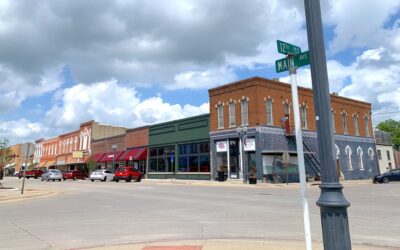After the giant Standard Oil Company was broken into thirty-four separate companies in 1911, the newly independent Standard Oil of Nebraska dominated the state’s market for gasoline and petroleum products. It played an important role in Nebraska as the first company to market statewide with a network of freestanding filling stations that were not attached to other businesses. L. Robert Puschendorf’s “Standard Oil’s ‘Bungalow’ Filling Stations,” in the Summer 2006 issue of Nebraska History magazine, includes more information and photographs of these unique stations.
Standard Oil of Nebraska opened its first drive-in filling station in Lincoln in 1914. A simple metal shed bolted to a cement foundation, the structure cost only $250. Standard soon adopted a more substantial and attractive design, and built its first station from the new plan in Omaha. The building permit, issued just three months after the permit for the Lincoln location, describes the building as a one-story, 16-by 16-foot brick building. Omaha architect Everett S. Dodds designed the new plan, essentially a brick “box” with a hipped roof and overhanging eaves. Construction costs for the new stations ranged from seven hundred to one thousand dollars.
Several newspapers described Standard Oil’s new stations as “bungalows,” probably using the term to describe a small house. The design was simple yet attractive, and with plans in hand, company representatives could assure townspeople of their intention to construct an appealing building. The plans were designed to be easy for local contractors to use, and the specifications ensured that materials could be obtained from local suppliers. A superintendent from the Omaha headquarters oversaw construction, but wherever possible, local contractors were hired and materials were procured locally. The Hastings Tribune commented:
“[The construction superintendent] employed all home labor on the construction this one item of expense being a little over $500. An idea of the character of the construction is indicated by the fact that 600 sacks of cement were used. All of the material except the piping and tanks was bought in Hastings.”
From 1914 to 1919, Standard Oil of Nebraska built twenty-four stations from the Dodds plans. But in 1919 the architectural commission for Standard Oil Company stations was given to John and Alan McDonald, prominent father-and-son architects of Omaha, and by that fall a new design began to appear in Standard Oil’s newspaper advertisements. The company soon replaced most of the small “bungalow” buildings with a new design.



